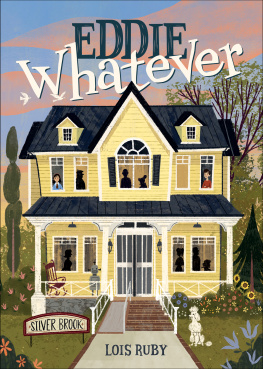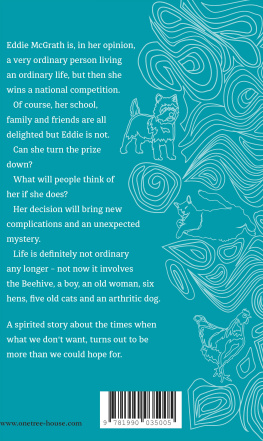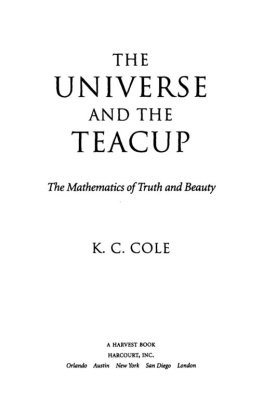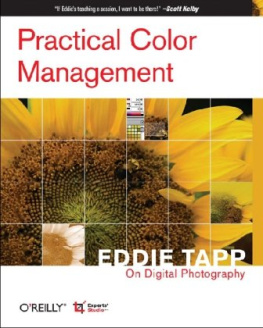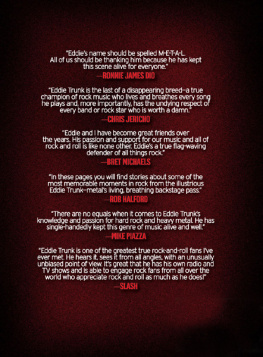Eddie R. Cole - The Campus Color Line
Here you can read online Eddie R. Cole - The Campus Color Line full text of the book (entire story) in english for free. Download pdf and epub, get meaning, cover and reviews about this ebook. year: 2020, publisher: Princeton University Press, genre: Politics. Description of the work, (preface) as well as reviews are available. Best literature library LitArk.com created for fans of good reading and offers a wide selection of genres:
Romance novel
Science fiction
Adventure
Detective
Science
History
Home and family
Prose
Art
Politics
Computer
Non-fiction
Religion
Business
Children
Humor
Choose a favorite category and find really read worthwhile books. Enjoy immersion in the world of imagination, feel the emotions of the characters or learn something new for yourself, make an fascinating discovery.

- Book:The Campus Color Line
- Author:
- Publisher:Princeton University Press
- Genre:
- Year:2020
- Rating:5 / 5
- Favourites:Add to favourites
- Your mark:
- 100
- 1
- 2
- 3
- 4
- 5
The Campus Color Line: summary, description and annotation
We offer to read an annotation, description, summary or preface (depends on what the author of the book "The Campus Color Line" wrote himself). If you haven't found the necessary information about the book — write in the comments, we will try to find it.
The Campus Color Line — read online for free the complete book (whole text) full work
Below is the text of the book, divided by pages. System saving the place of the last page read, allows you to conveniently read the book "The Campus Color Line" online for free, without having to search again every time where you left off. Put a bookmark, and you can go to the page where you finished reading at any time.
Font size:
Interval:
Bookmark:
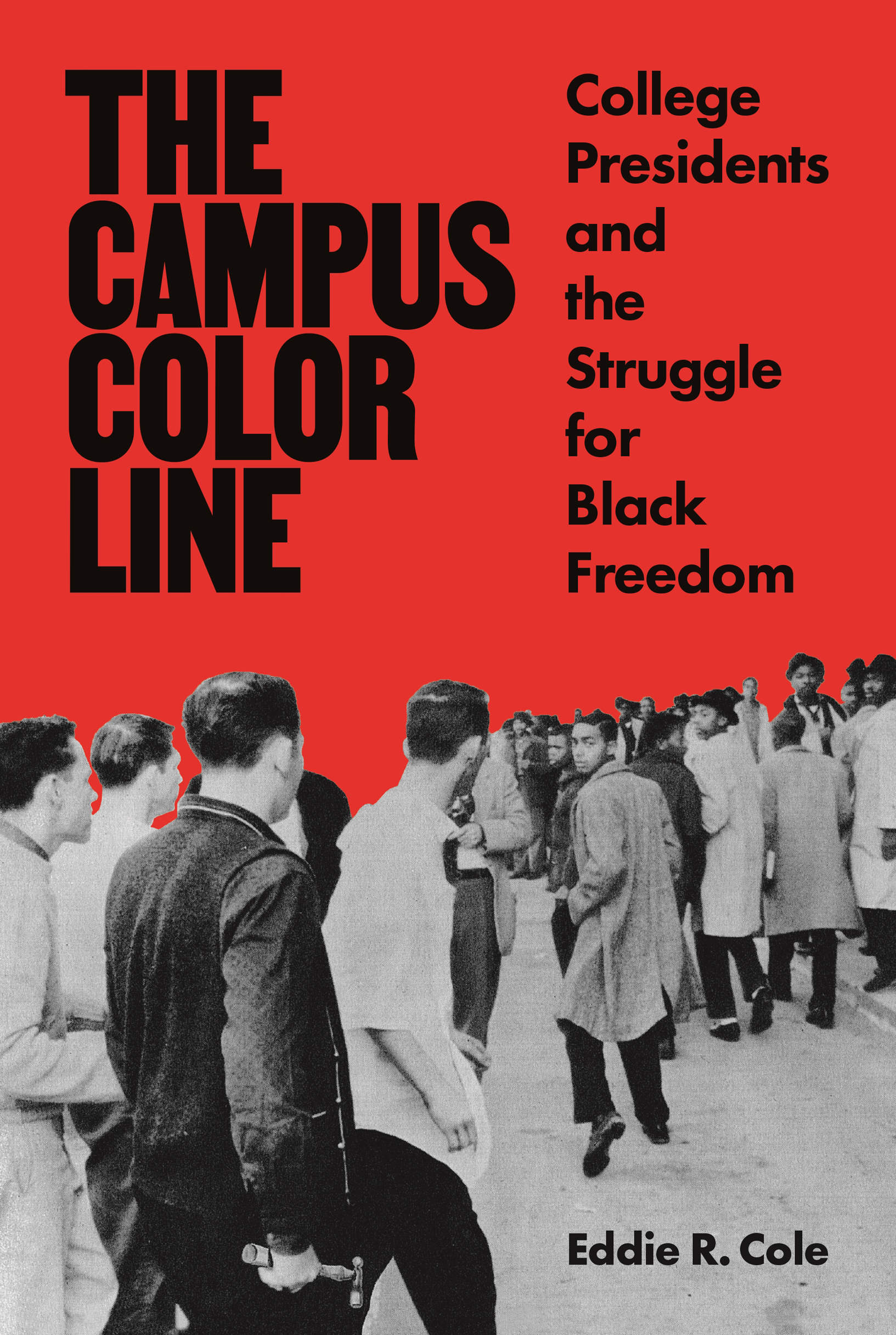
THE CAMPUS COLOR LINE
The Campus Color Line
COLLEGE PRESIDENTS AND THE STRUGGLE FOR BLACK FREEDOM
EDDIE R. COLE
PRINCETON UNIVERSITY PRESS
PRINCETON & OXFORD
Copyright 2020 by Princeton University Press
Requests for permission to reproduce material from this work should be sent to permissions@press.princeton.edu
Published by Princeton University Press
41 William Street, Princeton, New Jersey 08540
6 Oxford Street, Woodstock, Oxfordshire OX20 1TR
press.princeton.edu
All Rights Reserved
ISBN 9780691206745
ISBN (e-book) 9780691206752
Version 1.0
British Library Cataloging-in-Publication Data is available
Editorial: Peter Dougherty, Alena Chekanov
Production Editorial: Terri OPrey
Jacket/Cover Design: Chris Ferrante
Production: Erin Suydam
Publicity: Alyssa Sanford, Amy Stewart
Copyeditor: Molan Goldstein
Jacket image: From Sit-Ins: The Student Report, published by the Congress of Racial Equality, May 1960. Courtesy of the State Archives of Florida
- vii
- ix
THE IDEA for this book is a natural extension of my own Black educational genealogy. I grew up in Boligee, Alabama. It is a small town located in the Alabama Black Belt. There, my parents were school teachers. Each worked more than thirty years across the Greene and Sumter county school systems. Before them, my fathers parents were also rural west Alabama teachers, starting their careers in one- and two-room schoolhouses. They were also graduates of Black colleges and members of the states Black teacher association. Combined, their careers made clear the role of education in the Black freedom struggle, and their lives molded me.
By the time I started formal education, the de jure school segregation that my parents and grandparents experienced in the Jim Crow South had long been exchanged for de facto practices. For instance, the all-Black public high school that I attended in nearby Eutaw, Alabama, was located around the corner from a smaller, yet defiant, majority-white private academy. The short, slender Woodfield Avenue was our color line. That was an accepted norm in the Alabama Black Belt; however, it sparked my intellectual curiosity about the decisions made by past educational leaders, and how those choices shaped the present. This book takes up those same questions within the context of higher education.
Today, the debate continues over who should or should not be admitted to certain colleges and universities. The relationship between expanding urban campuses and bordering neighborhoods remains contentious. There is still uncertainty over where hate speech begins and free speech ends. Black students are demanding an end to racism on majority-white campuses. Questions over the legality of affirmative action are entering yet another decade. And campus relationships with law enforcement are under renewed scrutiny. All the while, elected officials regularly resuscitate old questions about Historically Black Colleges and Universities (HBCUs) and the vitality, funding, and governance of those institutions. These are serious issues. But these contemporary issues have long histories.
Several college presidents are just now, in the twenty-first century, acknowledging how their institutions benefited from slavery and, at last, beginning to make symbolic and practical reparations. This reconciliation has been 175 years in the making; however, one does not have to go back that far to see how academic leaders have impacted the struggle for Black freedom, past or present. Therefore, if we are just beginning to unspool and make right the injustices from the mid-1800s, what does that mean for reconciling more recent college presidents decisions?
Perhaps now, more than ever, we need to understand how college presidents have influenced racial policies and practices. This book is being released amid a global health and racial pandemic that will likely permanently change education, and the accompanying economic uncertainty resulting from this crisis has, once again, turned our attention to university leaders. The decisions made by college presidents today will have long-term racial implications, but we can better examine those decisions when we frame them within the history of their predecessors actions for or against racial equity.
In closing this preface, I am reminded of what Frederick Douglass argued in 1881: slavery, ignorance, stupidity, servility, poverty, dependence, are undesirable conditions. When these shall cease to be coupled with color, there will be no color line drawn. But when shall the twenty-first-century renditions of those conditions cease? I wrote this book as a challenge to the global citizenry to critically self-reflect on the ongoing struggle for Black freedom and how academic leaders have held, or are holding, the campus color linea division that has shaped generations.
THIS BOOK would not be before you if not for support from countless family members, friends, mentors, former professors, colleagues, conference discussants, and archivists.
My parentsEddie (formally, I am Eddie II) and Nancy Coleare the best. Mom has always been careful and attentive to details, while dad has always offered big-picture perspectives on Black life in the United States. What a much younger me once considered to be insignificant parental character traits, I have drawn on them to complete this book. Furthermore, my big sistersLatryce and Charleneset a high bar that I am still trying to reach. Thank you!
My formal introduction to the study of higher education started at Indiana University (IU). Since then, several IU alumni and past and present faculty continue to cheer on my career. This includes Shaun R. Harper, Thomas F. Nelson Laird, Robin Hughes, Megan Palmer, Donald Hossler, Danielle DeSawal, Andrea Walton, Nancy Chism, and Vasti Torres. Beyond the IU School of Education, I had insightful, supportive conversations about my study of college presidents and the Black Freedom Movement with Valerie Grim, James Wimbush, Khalil Muhammad, Marvin Sterling, and John Lucaites. These individuals may not realize the impression they left on me, but I have always valued their most casual conversations that pushed my thinking. Of course, there is no IU faculty member who has been more impactful on my life than Dionne Danns. In more ways than I can articulate, this book is a testament to her friendship, advice, sharpness, and ongoing supportthank you.
Additionally, I owe a great amount of debt to the people I met as an IU graduate student. Although I had no initial desire to live in Bloomington, it turned out to be one of the best decisions of my life. I continue to admire and appreciate Adrian D. Land, Nadrea R. Njoku, Carl Suddler, Cameron J. Harris, Mahauganee D. Shaw Bonds, and Rubin Pusha III. As my time at IU progressed, I found unwavering support in Jessica C. Harris, Katherine I. E. Wheatle, Francisco Ramos, and Brian L. McGowan. I am grateful for each of you.
I also offer my sincerest thanks to the staff of the Spencer Foundation and members of the National Academy of Education (NAEd). In 2015, my NAEd/Spencer Postdoctoral Fellowship supported the early development of this book, which required a substantial amount of travel across the United States. In total, I visited twenty-seven colleges and universities, as well as state archives and local historical societies, as part of my national archival exploration. I am equally grateful to the staff of the Woodrow Wilson National Fellowship Foundation. In 2017, I was named a Mellon Emerging Faculty Leader (formerly the Nancy Weiss Malkiel Award), which offered invaluable support for follow-up archival visits and manuscript revision. The University of Chicagos Robert L. Platzman fellowship, Princeton University Library grant, and the University of Wisconsin-Madison Library grant were also instrumental.
Font size:
Interval:
Bookmark:
Similar books «The Campus Color Line»
Look at similar books to The Campus Color Line. We have selected literature similar in name and meaning in the hope of providing readers with more options to find new, interesting, not yet read works.
Discussion, reviews of the book The Campus Color Line and just readers' own opinions. Leave your comments, write what you think about the work, its meaning or the main characters. Specify what exactly you liked and what you didn't like, and why you think so.

